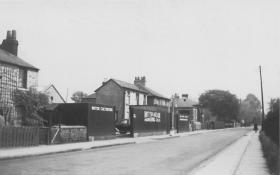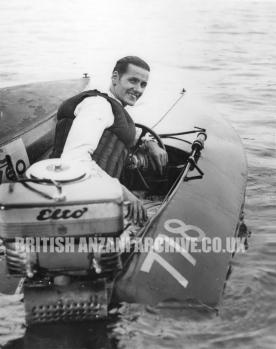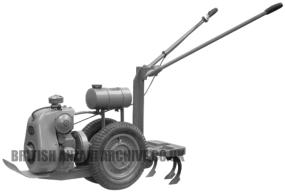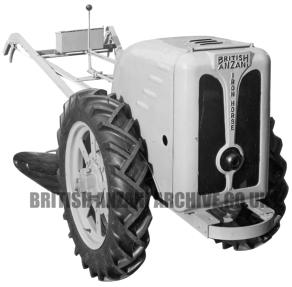
british anzani archive:



additional tools that
were continually
developed and added
to over the years.
Uses included saws,
concrete mixers,
pumps and
generators.
These popular
machines proved
robust and reliable in
use and sold in
thousands all around
the world. They cost
£140 in 1940 or
alternatively could be
bought on hire
purchase or even
rented from the
factory for £3.10s.0d.
a week!
For lighter work the Planet Jnr. motor hoe could be had for £39.10s.0d.
Introduced in 1948 it was powered by a 1hp Anzani/JAP engine and had a range
of implements similar to the Iron Horse. The advertising brochure claimed it
‘made work a pleasure’ and the little hoe went into use in market gardens and
smallholdings around the globe. Production of agricultural tractors stopped in
1956.
Early customers for Anzani V-twin motorcycle engines included McEvoy, the
Derby based motor cycle maker financed by Cecil Birkin who used the 1100cc
Anzani engine between 1925 and 1929, and AJW who used the same engine
from 1926 to 1931. This top of the range bike was latterly sold in racing spec
only and had a four speed Jardine gearbox and interconnecting brakes among
many advanced features. Another customer was Montgomery motorcycles of
Bury St Edmunds,
who used the engine
from 1925.
Mass production of
motorcycle engines
had ceased the
1930’s but was
restarted in 1953
with two new
engines: the 242cc
and 322cc twin
cylinder models.
They were based
on the successful
1951 Unitwin
outboard motor
design and were
very different from
most British
motorcycle engines
made at the time.
The crankcase was
split horizontally
and it breathed
through a rotary
inlet valve
embodied in the
middle journal of the crankshaft.
From 1954-58 the Norman TS motorcycle was fitted with the 242cc British
Anzani 2 stroke twin engine. From 1955 to 1960 Cotton used the 242 and 322cc
engines in their Cotanza models and Greeves had both variants in their
Fleetwing and Fleetmaster models from 1953 to 1958. Tandon produced 242cc
Twin Supreme and 322cc Viscount motorcycles in 1954 and 1955 and also in
1955 the 250 Scrambler competition bike.
When motor cycle
production slowed
Anzani went into
light car production
and in 1954 a
subsidiary division
developed the Astra.
This small utility
vehicle had been
designed and
produced originally
by JARC Motors of Isleworth and known then as the Little Horse but lack of
funds meant the production rights were sold off. British Anzani immediately
installed their 322cc motorcycle engine into the rear underfloor engine
compartment, changed some of the design specifications, renamed it the Astra
Utility and marketed it to 'tradesmen, travellers and service engineers'. It had a
load carrying capacity of 37cu.ft or 3½cwt and it's 15bhp engine and three speed
gearbox gave a claimed top speed of 55 mph with 60 mpg economy. It had
independent suspension by swing axles, hydraulic brakes and it seated two in
relative comfort all at an on the road price of £347.16s.0d including purchase tax











